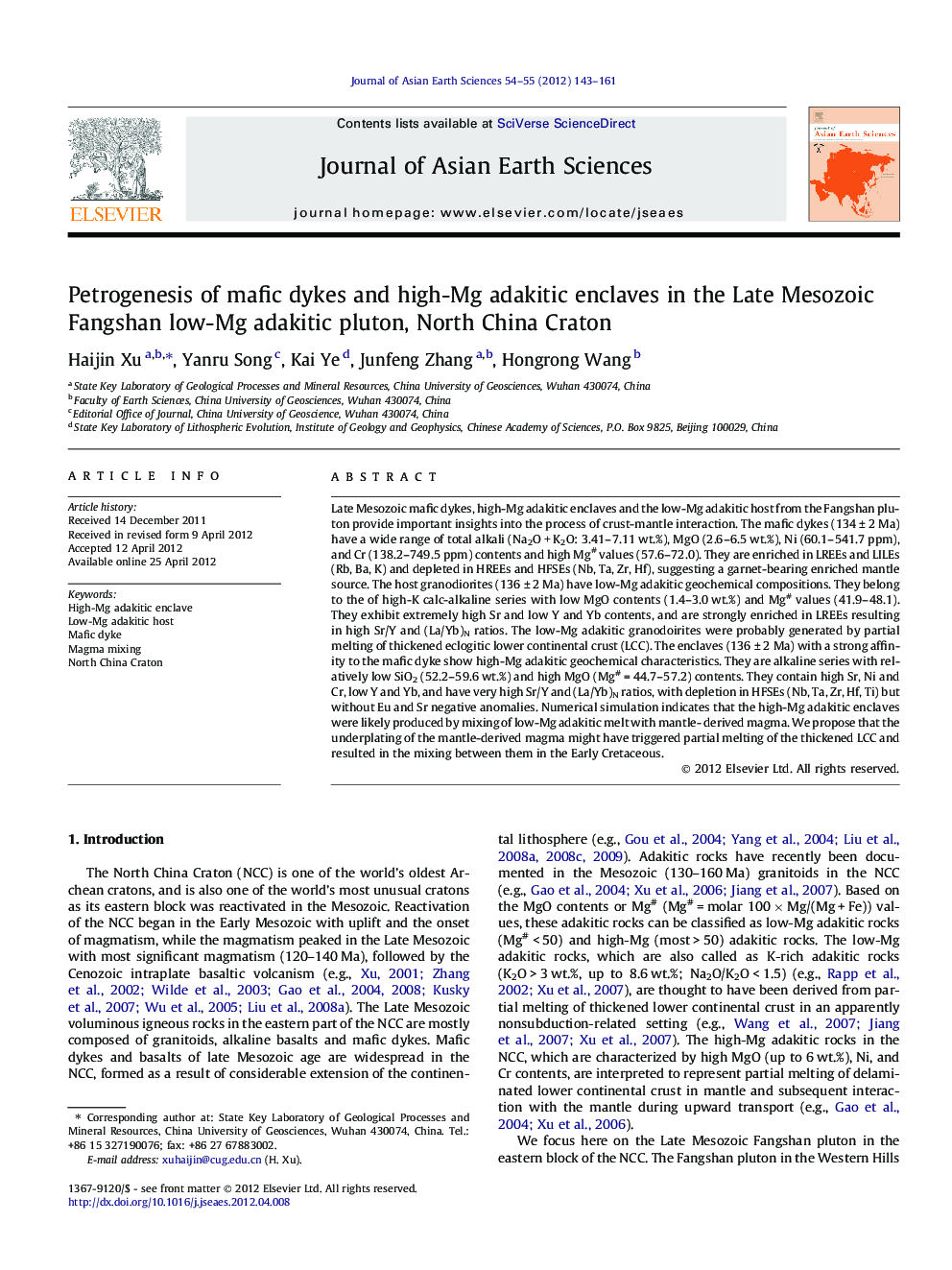| Article ID | Journal | Published Year | Pages | File Type |
|---|---|---|---|---|
| 4731405 | Journal of Asian Earth Sciences | 2012 | 19 Pages |
Late Mesozoic mafic dykes, high-Mg adakitic enclaves and the low-Mg adakitic host from the Fangshan pluton provide important insights into the process of crust-mantle interaction. The mafic dykes (134 ± 2 Ma) have a wide range of total alkali (Na2O + K2O: 3.41–7.11 wt.%), MgO (2.6–6.5 wt.%), Ni (60.1–541.7 ppm), and Cr (138.2–749.5 ppm) contents and high Mg# values (57.6–72.0). They are enriched in LREEs and LILEs (Rb, Ba, K) and depleted in HREEs and HFSEs (Nb, Ta, Zr, Hf), suggesting a garnet-bearing enriched mantle source. The host granodiorites (136 ± 2 Ma) have low-Mg adakitic geochemical compositions. They belong to the of high-K calc-alkaline series with low MgO contents (1.4–3.0 wt.%) and Mg# values (41.9–48.1). They exhibit extremely high Sr and low Y and Yb contents, and are strongly enriched in LREEs resulting in high Sr/Y and (La/Yb)N ratios. The low-Mg adakitic granodoirites were probably generated by partial melting of thickened eclogitic lower continental crust (LCC). The enclaves (136 ± 2 Ma) with a strong affinity to the mafic dyke show high-Mg adakitic geochemical characteristics. They are alkaline series with relatively low SiO2 (52.2–59.6 wt.%) and high MgO (Mg# = 44.7–57.2) contents. They contain high Sr, Ni and Cr, low Y and Yb, and have very high Sr/Y and (La/Yb)N ratios, with depletion in HFSEs (Nb, Ta, Zr, Hf, Ti) but without Eu and Sr negative anomalies. Numerical simulation indicates that the high-Mg adakitic enclaves were likely produced by mixing of low-Mg adakitic melt with mantle- derived magma. We propose that the underplating of the mantle-derived magma might have triggered partial melting of the thickened LCC and resulted in the mixing between them in the Early Cretaceous.
► Mafic microgranular enclaves in low-Mg adakitic host are high-Mg adakitic rocks. ► Enclaves were generated by mixing of low-Mg adakitic melt with mantle-derived magma. ► Underplating of mantle-derived magma might have triggered crust-mantle interaction.
